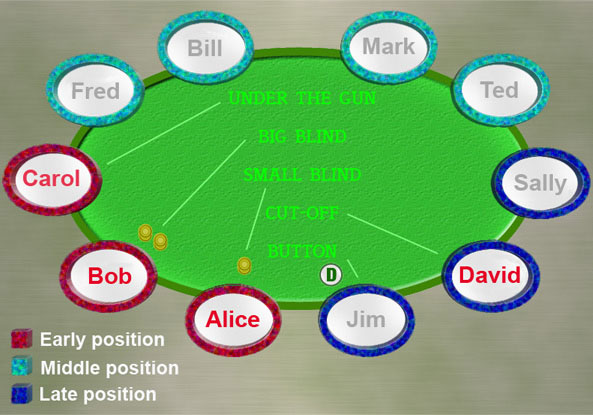Poker Fundamentals
- Introduction to Poker
- Understanding Texas Hold'em
- Fundamentals of Poker Strategy
Fundamentals of Poker Strategy
Understanding Poker Position: Early, Middle, Late, and Blind

Procedures of betting in poker.
In the game of Texas Hold'em Poker, understanding the concept of position is crucial. The position refers to where a player is seated in relation to the dealer and has a significant impact on a player's strategy and decision-making process. This article will delve into the different positions in poker and their strategic implications.
The Concept of Position in Poker
In poker, the position is determined by the order of play. The player who acts first is said to be in "early" position, while the player who acts last is in "late" position. The players in between are in "middle" position. The position rotates with each new hand, moving one seat to the left.
Early Position
The early position is the most challenging place to play from because you have the least amount of information. You have to make your decision before anyone else, without knowing what the other players will do. This lack of information makes it risky to play anything but the strongest hands from early position.
Middle Position
The middle position offers a bit more flexibility. You have more information than the players in early position because you've seen some of the players act. However, there are still players to act after you, so you need to be cautious. Middle position allows for a slightly wider range of hands to be played compared to early position.
Late Position
The late position is the most advantageous place to be. You have the most information because you've seen all the other players act. This information allows you to make more informed decisions and to play a wider range of hands. The late position also gives you more opportunities to control the pot size and to bluff.
The Blinds
The blinds are two forced bets that occur before the cards are dealt. The player to the left of the dealer is the "small blind," and the player to their left is the "big blind." The blinds are in the late position pre-flop (before the community cards are dealt) but are first to act in subsequent betting rounds. This shift from late to early position can be challenging to navigate and requires careful strategy.
In conclusion, understanding the concept of position in poker is crucial for developing a solid strategy. The position impacts the range of hands you can play and the decisions you make. By understanding the advantages and disadvantages of each position, you can make more informed decisions and improve your overall game.